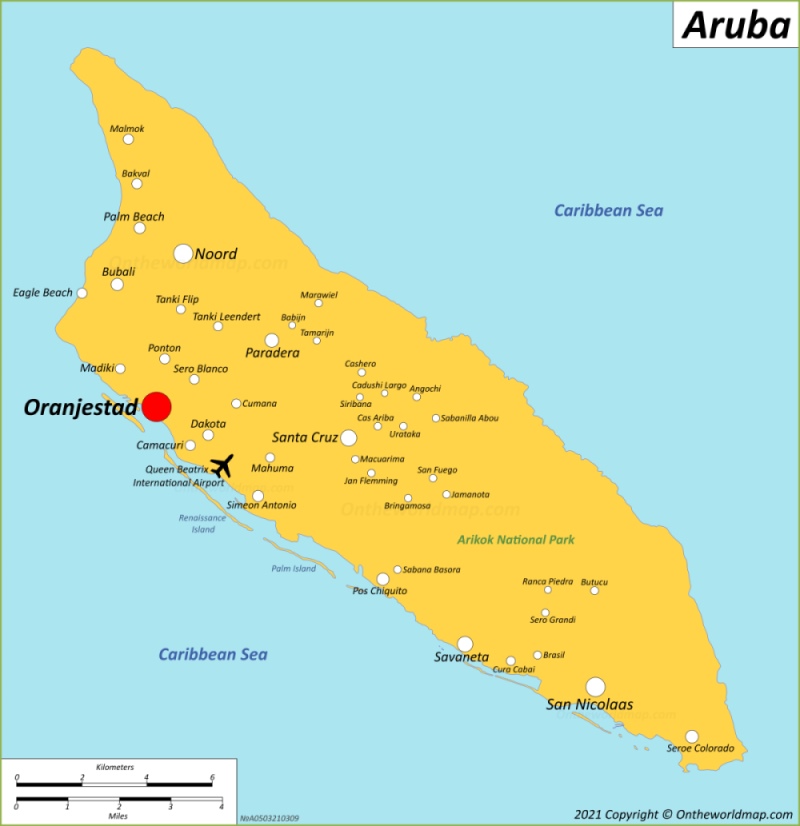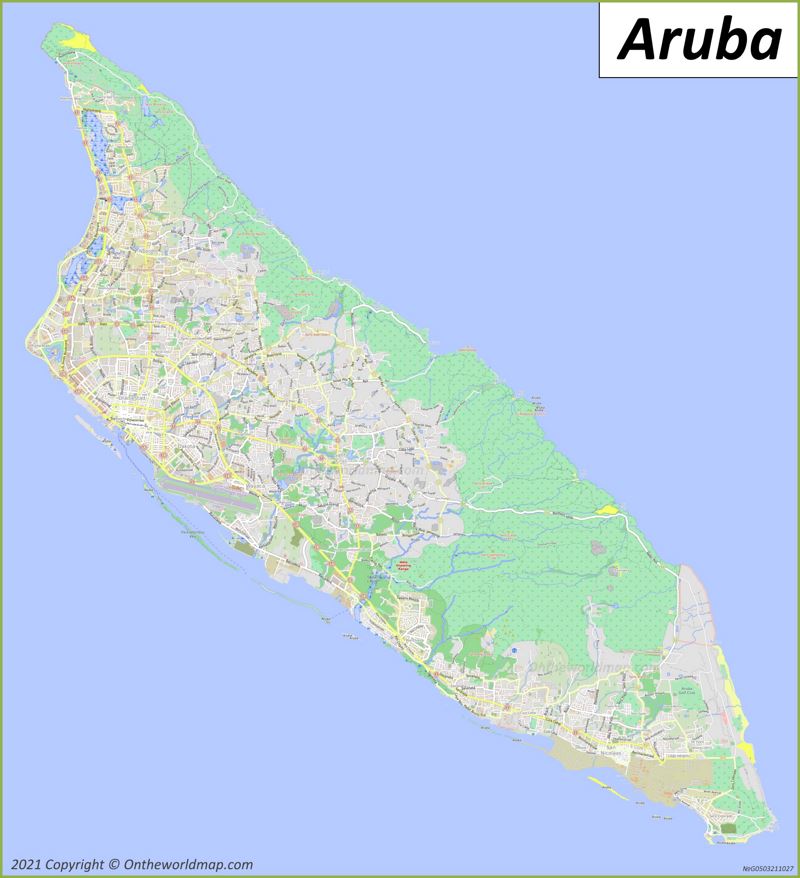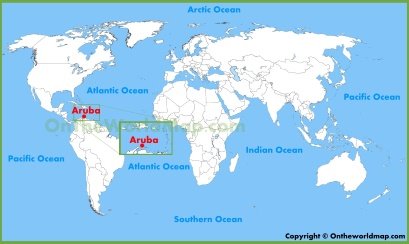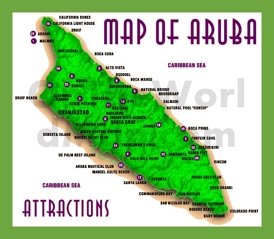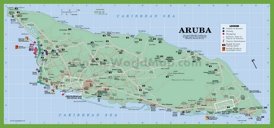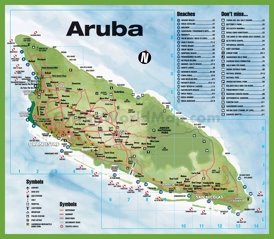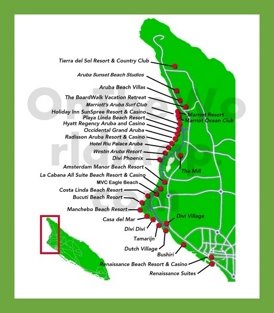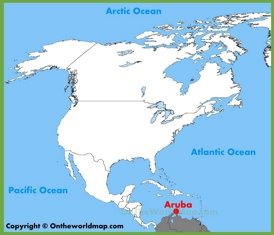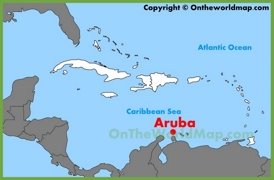Aruba Map
Description:
This map shows islands, airport, national park, major cities and towns in Aruba.
Size: 1400x1447px / 377 Kb
Author: Ontheworldmap.com
You may download, print or use the above map for educational, personal and non-commercial purposes. Attribution is required. For any website, blog, scientific research or e-book, you must place a hyperlink (to this page) with an attribution next to the image used.
Description:
This map shows streets, roads, towns, rivers, parks and beaches in Aruba.
Size: 2541x2790px / 1.45 Mb
Author: Ontheworldmap.com
You may download, print or use the above map for educational, personal and non-commercial purposes. Attribution is required. For any website, blog, scientific research or e-book, you must place a hyperlink (to this page) with an attribution next to the image used.
Online Map of Aruba
Detailed Maps of Aruba
About Aruba
Aruba, a state within the Kingdom of the Netherlands, is located in the southern Caribbean Sea, about 29 kilometers north of Venezuela. As an island, Aruba has no land borders with other countries.
Oranjestad, the capital and largest city, is the administrative and cultural center of the island. San Nicolas, another significant city, is known for its cultural diversity and industrial activities.
Tourism is a major part of Aruba's economy, attracting visitors with picturesque beaches, vibrant nightlife and water sports opportunities. The two most famous beaches, Eagle Beach and Palm Beach, are characterized by pristine white sand and clear waters. Arikok National Park, which covers almost 20% of the island, features hiking trails and native flora and fauna. Cultural attractions such as the California Lighthouse and Alto Vista Chapel offer historical and architectural highlights.
In addition to tourism, the financial and business services sectors provide additional economic support. Aruba also engages in limited agriculture and manufacturing, specializing in products such as aloe and beverages. The government is prioritizing economic diversification to reduce dependence on tourism by investing in renewable energy and technology initiatives.
Aruba's geography is characterized by flat terrain with some hills, and the geology consists mainly of limestone and coral formations. The island has a tropical semi-arid climate characterized by low annual rainfall and persistent trade winds. The average temperature throughout the year stays around 28 degrees Celsius, making Aruba a popular year-round destination.
Aruba's history reflects a combination of indigenous and colonial influences. Prior to the arrival of Spanish explorers in the late 15th century, the island was inhabited by the Arawaks. The Dutch took control of the island in the 17th century, using Aruba as a strategic trading post. In the twentieth century, the island's economy shifted from gold mining to oil refining and then to tourism. In 1986, Aruba was granted autonomy within the Kingdom of the Netherlands, a milestone in its political development.
The Facts:Sovereign state: Kingdom of the Netherlands.
Capital: Oranjestad.
Area: 75 sq mi (193 sq km).
Population: ~ 107,000.
Cities and towns: Oranjestad, Noord, Paradera, San Nicolaas, Santa Cruz, Savaneta, Palm Beach, Parkietenbos, Bubali, Tanki Leendert, Babijn, Tamarijn, Brasil, Cura Cabai, Bringamosa, Jamanota, Urataka, Sero Grandi.
Official language: Dutch, Papiamento.
Currency: Aruban florin (AWG).
Driving side: right.
Calling code: +297.
Internet TLD: .aw.
Time zone: UTC−4:00 (AST).
Website: www.government.aw.
Google Map of Aruba

